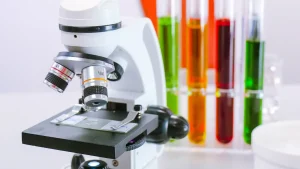タンタルカーバイド(TaC)コーティングは、優れた硬度と耐熱性を提供することで、材料の耐久性を高めます。 業界は、極端な条件下で性能を向上させるために、この高度なプロセスに依存しています。 利用する tacのコーティング機械 正確な適用および一貫した結果を保障します。 ザ・オブ・ザ・ cvdタックコーティング 方法、化学蒸気の沈殿の技術は、優秀な材料の保護のための均一層を達成します.

要点
- TaCコーティング 材料を強くし、耐熱性、厳しい条件のために完成して下さい.
- 高度機械助けは多くの企業のよりよい結果および節約の時間を与えるTACのコーティングを正確に適用します.
- 基礎材料の準備および コーティング中のチェック よいコーティングを得、間違いを避けることは重要です.
タックコーティングとその応用の概要
タックコーティングとは?
タンタルカーバイド(TaC)コーティングは、薄い、タンタルカーバイドの保護層を適用することにより、材料の性能を高める特殊な表面処理です。 非常に硬度および高い融点で知られるこの混合物は摩耗、腐食および熱圧力に例外的な抵抗を提供します。 コーティングプロセスは、通常、均一なカバレッジと基質への強い密着性を保証する化学蒸気蒸着(CVD)のような高度な技術を含みます。 堅牢な障壁を創り出すことで、, TaCコーティング 要求環境で使用されるコンポーネントの寿命を著しく拡張します.
産業用途におけるTACコーティングの利点
タックコーティングは、さまざまな業界に数多くの利点があります。 その優れた硬度は摩耗および機械的損傷から表面を保護します、そして熱安定性は材料が劣化なしで極端な温度に耐えることを可能にします。 コーティングはまた化学薬品の腐食に抵抗し、粗い化学薬品か反応環境を含む適用にとって理想的にします。 これらのプロパティは、メンテナンスコストとダウンタイムを削減し、全体的な運用効率を改善します。 また、tacコーティング機で実現した精密なアプリケーションは、一貫した品質を確保し、コーティングされたコンポーネントの信頼性を高めます.
タックコーティングに頼る産業
いくつかの業界は、性能要件を満たすTACコーティングに依存しています。 航空宇宙メーカーは、タービンブレードやその他の高温部品を保護するために使用します。 お問い合わせ 半導体業界プラズマおよび反応ガスにさらされる工具の耐久性を保証します。 コーティングは、腐食性物質に抵抗しなければならない化学処理分野でも重要です。 自動車やエネルギーなどの他の産業は、重要な部品の長寿と効率性を高める能力の恩恵を受けています.
タックコーティング機の主要コンポーネント
蒸着チャンバーとその機能
について 蒸着室 tacのコーティング機械の中心として役立つ。 タンタルカーバイド層が基板上に形成する制御環境を提供します。 これらの部屋は精密な温度および圧力条件を維持するように設計され、均一コーティングの沈殿物を保障します。 高い等級材料はプロセスの間に極度な熱および化学反応に抗するために部屋を造ります。 チャンバーの設計は、汚染リスクを最小限に抑え、高品質のコーティングを実現することが重要です。 高度なモデルは、多くの場合、モジュラー構成を含み、オペレータは異なる基質サイズと形状のチャンバーを適応させることができます.
コーティング用プラズマ生成システム
プラズマ生成システム tacのコーティング機械で重要な役割をします。 これらのシステムはイオン化ガスによってプラズマフィールドを作成します。, コーティング堆積に必要な化学反応を容易にします。. プラズマは、タンタルカーバイド粒子が基板表面に均一に付着することを保証します。 現代のプラズマシステムは、無線周波数(RF)やマイクロ波発生器などの高度な技術を使用して、一貫したプラズマ密度を実現します。 コーティングの密着性と耐久性を高めます。 オペレータはさまざまな企業のためのシステム多目的にする特定の適用条件を満たすために血しょう変数を調節できます.
精密監視・制御システム
モニタリングと制御システムは、タックコーティングマシンの精度と信頼性を保証します。 これらのシステムは、プロセス中の温度、圧力、およびプラズマ強度などの重要なパラメータを追跡します。 リアルタイムデータにより、オペレーターが調整を行い、最適なコーティング品質を保証します。 ヒューマンエラーを削減し、効率性を向上させる多くの機械機能自動制御。 高度なソフトウェアインターフェイスは、詳細な分析を提供し、ユーザーは問題を迅速に特定し、解決することができます。 これらのシステムは、一貫性を維持し、厳しい業界標準を満たすのに不可欠です.
タックコーティングのステップバイステッププロセス
基質の準備
基板準備からプロセスが始まります。 オペレータは汚れ、グリース、または酸化のような汚染物質を取除くために表面をきれいにします。 このステップはタンタルの炭化物の層の適切な付着を保障します。 超音波洗浄や化学エッチングなどの技術が採用されることが多いです。 クリーンで滑らかな基質表面は、均一なコーティングを達成するために不可欠です.
コーティング機械に基質をローディングして下さい
準備の後で、基質はtacのコーティング機械に注意深く荷を積まれます。 オペレータは、プロセス中に動きを防ぐため、安全に配置します。 適切なアライメントにより、コーティング環境への暴露が保証されます。 高度機械は頻繁に自動ローディング システム、処理の間違いを減らし、効率を改善します.
真空の創造および部屋の調節
蒸着室はシールされ、真空は空気および不純物を除去するために作成されます。 コーティング中に不要な化学反応を防ぐ真空環境です。 システムが温度および圧力を最適レベルに安定させる部屋の調節は、続きます。 これらの条件は精密なコーティングの沈殿物のために必要です.
プラズマコーティングの活性化
プラズマの活性化は、チャンバーが調整されると始まります。 タックコーティング機は、ガスをイオン化することでプラズマを発生させ、エネルギー環境を作り出します。 このプラズマは、タンタルカーバイド層を堆積するために必要な化学反応を活性化します。 一貫性のあるプラズマ密度により、基板全体に均一なコーティングが保証されます.
タック層の堆積
蒸着フェーズでは、タンタルとカーボンの前駆体をチャンバーに導入しています。 これらの材料は薄く、耐久を形作るために血しょうで反応します タックレイヤー 基板上に。 tacのコーティング機械は良質のコーティングを達成するために温度およびガスの流れのような変数上の厳密な制御を維持します.
コーティングされた基質を冷却し、荷を下すこと
蒸着後、熱応力を防止するために基板が制御冷却を受けます。 冷却したら、オペレータは機械からの上塗を施してある基質を荷を下します。 自動化されたシステムは、汚染リスクを最小限に抑えるために、このステップを処理することが多い.
アフターコート検査・品質保証
最終的なステップは欠陥か不整合性のための上塗を施してある基質を点検することを含む。 マイクロコピーや厚さ測定などの技術は、コーティングの品質を検証します. 品質保証 基質が企業の標準および適用条件を満たしていることを確認します.
プロセスの品質と効率性を確保する
タックコーティング機におけるオートメーションの役割
オートメーションは現代 TaC のコーティング機械で重要な役割を担います。 自動化されたシステムは手動介入を減らすことによって操作を合理化し、間違いを最小にし、一貫性を高めます。 これらの機械は精密な基質の処理およびローディングのためのロボティック アームを使用しま、コーティング プロセスの間に均一露出を保障します.
これらの機械に統合される高度ソフトウェアはオペレータが特定のコーティング変数をプログラムすることを可能にします。 この機能は複数の生産周期を渡る反復性を保障します。 さらに、自動化された診断は、機器の故障を早期に検知し、コストを削減します。 オートメーションを組み込むことで、メーカーはより高いスループットと優れたコーティング品質を実現します.
プロセス監視・制御の重要性
効果的なプロセス監視により、TACコーティングプロセスが定義されたパラメータ内で残っていることを確認します。 リアルタイムセンサーは、温度、圧力、プラズマ強度などの重要な変数を追跡します。 任意の偏差は、アラートをトリガーします。, オペレータがすぐに調整を行うことを可能にします.
高度なアルゴリズムを搭載した制御システムは、ガス流量とプラズマ密度を最適化します。 これらのシステムは、過去のデータを保存し、オペレータが傾向を分析し、将来のプロセスを改善できるようにします。 一貫したモニタリングにより、業界標準に準拠し、製品の信頼性を高めます.
コーティング工程における共通課題への対応
オペレータは、多くの場合、不均等なコーティング厚さ、汚染、または機器の摩耗などの課題に直面しています。 これらの問題に対処するには、積極的なアプローチが必要です。 蒸着チャンバーとプラズマシステムの定期的なメンテナンスにより、性能劣化を防ぎます.
高品質のプレカーサを使用することで、一貫性のある化学反応の危険性が低下します。 機械の操作やトラブルシューティングに関するトレーニングオペレーターは、エラーを最小限に抑えます。 課題を迅速に特定し、解決することで、メーカーは効率性を維持し、高品質の結果をお届けします.
TaCコーティング 耐久性、熱抵抗、腐食防止を改善することにより、材料の性能を大幅に向上させます。 高度機械は精密な適用および一貫した結果、会議の企業の標準を保障します。 構造化されたプロセスの後で間違いを最小にし、効率を最大限に活用して下さい。 これらの技術に頼るメーカーは、優れた製品品質、ダウンタイムの削減、および長期的な運用上の成功を実現します.
よくあるご質問
タックコーティング層の典型的な厚さは何ですか?
TaCコーティング層の厚さは、通常からの範囲 1〜10ミクロン適用および基質の条件によって、.
タックコーティングの処理時間はどのくらいかかりますか?
プロセスの長さは異なりますが、通常はかかります 数時間基質の準備、コーティングの沈殿物および冷却フェーズを含む、.
すべての材料にTACコーティングを応用できますか?
TaCコーティングは最もよく働きます 金属および陶磁器. . 互換性は、コーティングプロセス中に高温に耐える基質の能力に依存します.
製品の詳細については、下記までお問い合わせください。 steven@china-vet.com またはウェブサイト: www.vet-china.com.







